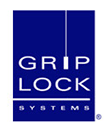Industry News
Lighting Ballasts That Direct Patients
February 16, 2008
Researchers are developing a high-resolution tracking system that uses PDAs and audio directions to guide patients around hospital wards. The system also helps rehabilitate those with traumatic brain injuries. The system, which is made by Boston startup Talking Lights, uses light fixtures as beacons to send information to a PDA via an optical receiver. The PDA is also loaded with mapping software, information about the building, and user-specific data such as appointment schedules.
Traumatic brain injuries, which might result from car accidents or the detonation of an improvised explosive device, among other possible causes, can lead to cognitive problems that include trouble with abstract thinking, memory, and spatial orientation. The Talking Lights guidance system is "a tremendous asset for someone with traumatic brain injury," says Heechin Chae, medical director of the brain injury center at Spaulding Rehabilitation Hospital, in Boston. The system has been tested at the hospital over the past two years and is currently used by about 20 patients. It not only helps patients navigate the rehab center, but it also appears to help them relearn how to process visual cues and navigate unfamiliar environments, Chae says.
Installing the indoor guidance system in a building is a simple and fairly cheap process, says Neil Lupton, president of Talking Lights. The light fixtures don't need to be replaced. All that needs to be switched out is the ballast, an electrical component that's normally replaced every few years in all fluorescent lights. The ballast regulates the amount of electricity that goes into the bulb to maintain the light level and keep the bulb from exploding.
Steven Leeb, a professor of electrical engineering and computer science at MIT, designed a ballast that modulates the light coming out of the bulb in a set pattern to give each bulb a unique optical signature. No flickering is visible to the naked eye, but off-the-shelf optical receivers can detect these patterns.
Click below for full article:









































